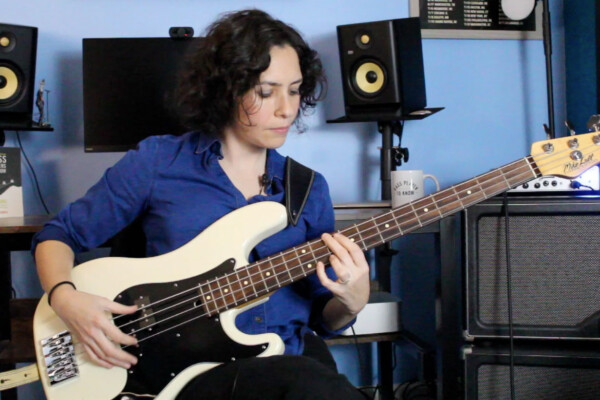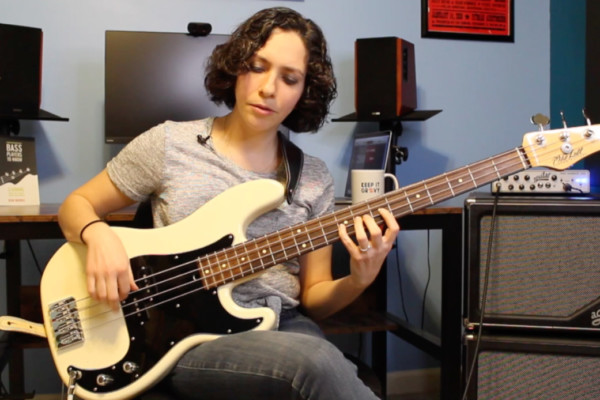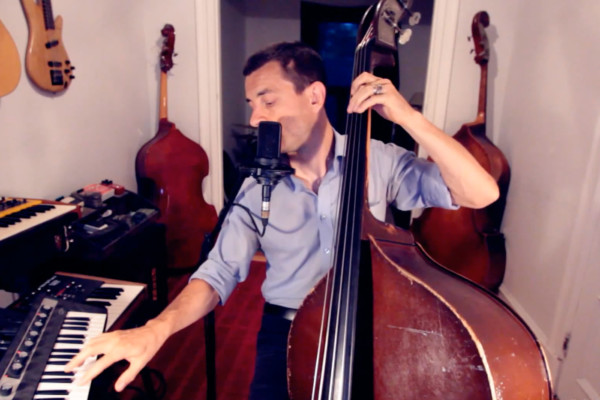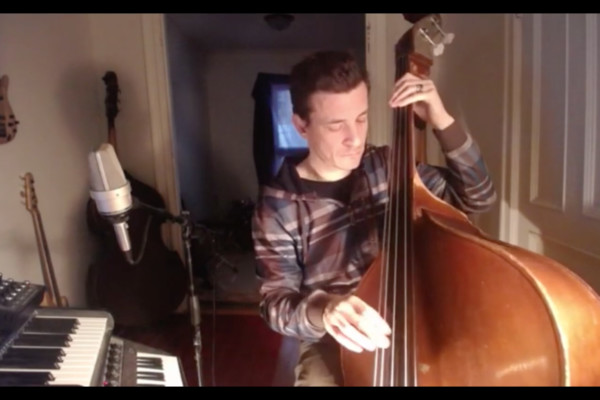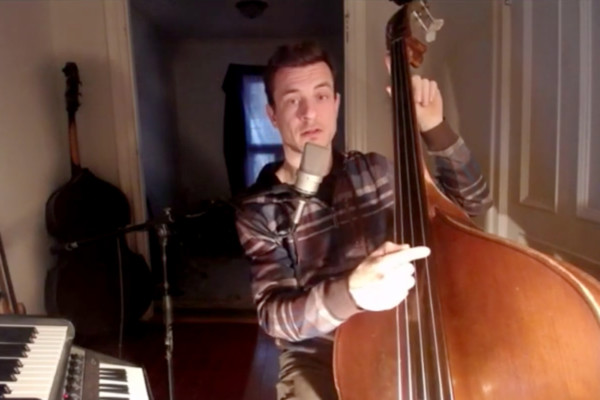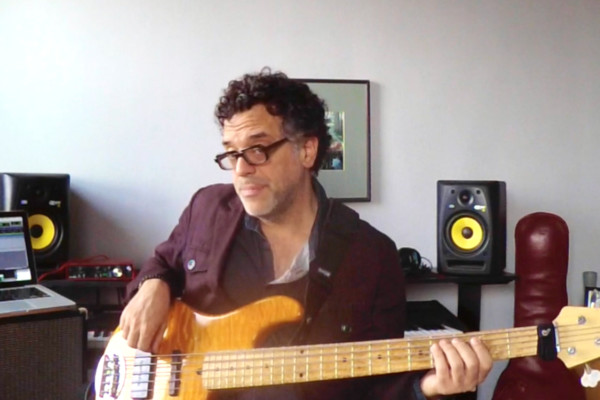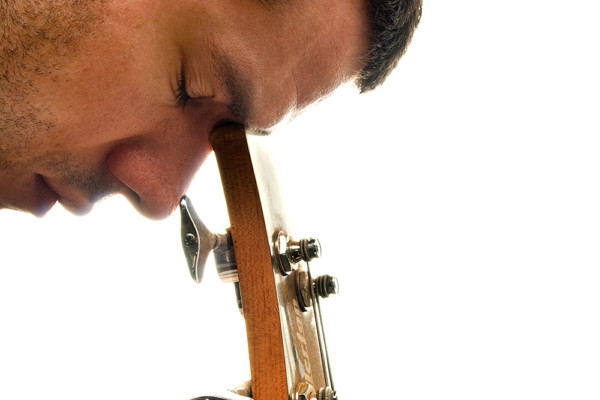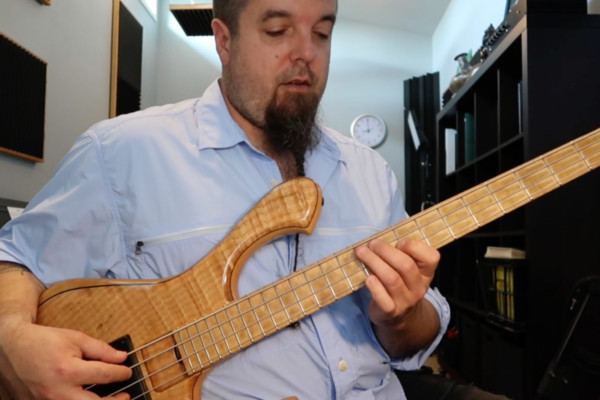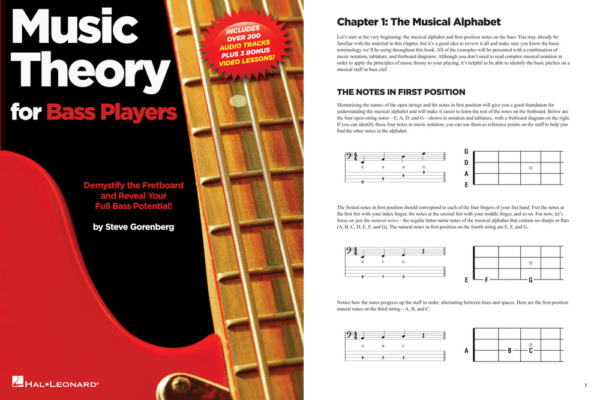Music Theory Archives
Easy Music Theory For Bass: Tenth Chords
Let’s bring in the new year with a touch of theory and chord building on the bass. This lesson is all about 10th chords... what they are, how to play them, and a quick exercise to help you practice major and minor chords.
Keep It Groovy: Learn How to Play Journey’s “Don’t Stop Believin’”
In her new “Keep It Groovy” lesson, Ryan Madora digs into the iconic bass line on Journey’s “Don’t Stop Believin’.” If you have any aspiration to play in a bar, wedding, or corporate band, this is definitely a bass line that you need to know.
Bass & Creativity: The ii-V-I and Voice Leading
The ii-V-I is one of the most common chord progressions in music. As bassists, we have a horizontal view of the harmonic movement. Today we’ll see how other instruments view the progression and implement voice leading to build interesting lines.
Bass & Creativity: Dorian Mode
Olivier Babaz is back with his second entry in his “Bass & Creativity” lesson series. In this video lesson, he’s focusing on exploring the sounds, colors, and options through improvisation within the Dorian mode.
Bass & Creativity: Harmonic Sequences
In this video lesson, we'll practice and explore the harmonic possibilities of combining bass playing with one or two top notes. Follow along with the video and topic outline.
Where To Start with Music Theory
A reader sent Damian one of the most honest questions we've seen, focused on his lack of understanding theory and his desire to change that. Check out what Damian has to say on “Where To Start with Music Theory.”
The Lightbulb Moment: One Song To Learn
Ryan’s new “Lightbulb Moment” started out with a question: “Is there one song that contains an exemplary amount of bass playing knowledge?” She picked one and broke it down completely. (The tune may come as a surprise!)
Vertical Soloing: Using Minor Pentatonic on Five Chord Types
In this lesson, Lorin Cohen illustrates how to use one minor pentatonic scale over five chord types. In this case, using the B minor pentatonic scale to play over a progression. This illustrates what Lorin calls a “vertical” approach to soloing, where we create lines that move swiftly up and across the fingerboard.
How Much Music Theory Do I Really Need To Know?
A reader emailed Damian describing his struggles with music theory and asked for his thoughts on the importance of it. While there are lots of ways to look at this, Damian breaks describes some paths to take in your musical growth.
Modal Arpeggio Patterns for Bass
We’re continuing our exercise series this week with a lesson on modal arpeggio patterns. Learning modes, scales, and patterns help to open the fretboard up in your mind. You learn the connections, intervals, and relationships of the notes. Some of this sounds more complicated than it is. Hang in there and we will work it all out.
Hal Leonard Publishes Music Theory for Bass Players
If you’re looking for a new book to bone up on your music theory, Hal Leonard has published a new book on the subject dedicated to bassists. Music Theory for Bass Players is a 160-page book aimed at helping you get the most out of your playing. Written by Steve Gorenberg, it has chapters starting with the musical alphabet and...
Creative Bass Lines: Using the Melodic Minor Scale To Navigate on a Minor ii-V-i Chord Progression
Welcome back to another column, and today we’re diving further into jazz-related harmony with a look at starting to get inside two of the most useful modes from the melodic minor scale. The full line is demonstrated right after the opening title credits, with a little backing groove, and then during the video, I dissect and explain it for you....
